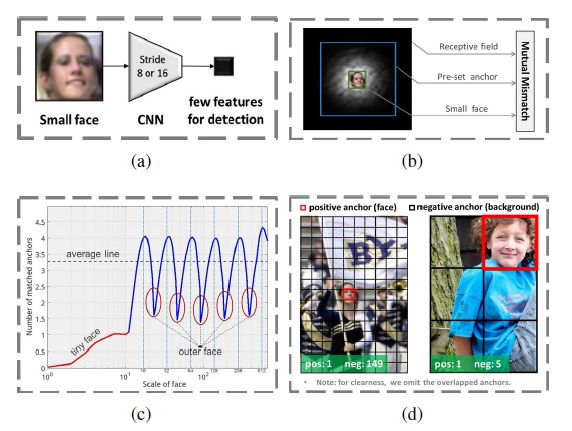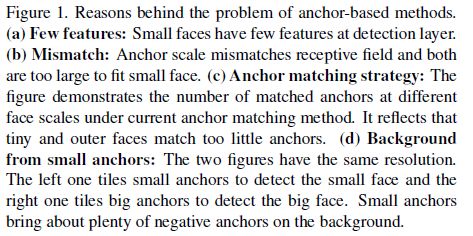- 快速上手:C OpenCvSharp Yolov8 人脸关键点检测工具
卢枫岱
快速上手:C#OpenCvSharpYolov8人脸关键点检测工具COpenCvSharpYolov8FaceLandmarks.rar项目地址:https://gitcode.com/open-source-toolkit/4d2a0项目介绍在当今的数字化时代,人脸识别和关键点检测技术已经成为许多应用的核心组成部分。无论是安防监控、人机交互还是虚拟现实,准确且高效的人脸关键点检测都是不可或缺的。
- 探索未来视频创作:Tune-A-Video项目深度解析
刘通双Elsie
探索未来视频创作:Tune-A-Video项目深度解析Tune-A-Video[ICCV2023]Tune-A-Video:One-ShotTuningofImageDiffusionModelsforText-to-VideoGeneration项目地址:https://gitcode.com/gh_mirrors/tu/Tune-A-Video在数字艺术与人工智能的交汇点上,Tune-A-Vi
- 【音视频之SDL2】一篇搞懂纹理与渲染
人才程序员
音视频基础大合集音视频cc++SDL2计算机视觉视频编解码实时音视频
文章目录前言SDL2的纹理与渲染什么是纹理?什么是渲染?比较SDL_SurfaceSDL_Texture纹理与渲染的关系使用纹理与渲染绘制一个BMP图片使用纹理与渲染的流程SDL_CreateRenderer作用函数原型参数返回值SDL_CreateTextureFromSurface作用函数原型参数返回值SDL_UpdateTexture作用函数原型参数返回值何时调用它SDL_RenderCop
- YOLOv10-1.1部分代码阅读笔记-model.py
红色的山茶花
YOLO笔记深度学习
model.pyultralytics\engine\model.py目录model.py1.所需的库和模块2.classModel(nn.Module):1.所需的库和模块#UltralyticsYOLO,AGPL-3.0licenseimportinspectimportsysfrompathlibimportPathfromtypingimportUnionimportnumpyasnpim
- 人体关键点实操网站
3TV
人体关键点检测
1、Face++:https://www.faceplusplus.com.cn/skeleton-detection/2、百度AI开放平台:https://ai.baidu.com/tech/body/pose?track=cp:ainsem|pf:pc|pp:chanpin-rentifenxi|pu:rentifenxi-guanjiandianshibie|ci:|kw:100065423
- 《CPython Internals》阅读笔记:p177-p220
codists
读书笔记python
《CPythonInternals》学习第11天,p177-p220总结,总计44页。一、技术总结1.memoryallocationinC(1)staticmemeoryallocationMemoryrequirementsarecalculatedatcompiletimeandallocatedbytheexecutablewhenitstarts.(2)automaticmemeorya
- 《CPython Internals》阅读笔记:p250-p284
python
《CPythonInternals》学习第14天,250-p284总结,总计25页。一、技术总结介于我觉得作者写得乱七八糟的,读完我已经不想说话了,所以今日无技术总结。二、英语总结(生词:2)1.spawn(1)spawn:来自于词根expandere。(2)expandere:ex-("out")+pandere("tospread")spawn原来的意思是“spreadingoutoffish
- 直击青藏高原数据匮乏难题!浙江大学团队提出GeoAI新模型,解释青藏高原地表热流分布
在地球科学研究中,地表热流(SurfaceHeatFlow,SHF)作为地球深层热能释放的重要表征,一直备受关注。地表热流不仅是地球内部能量驱动的一面「窗口」,更是揭示地壳热结构、地幔热动力学及地质构造演化的关键参数。通过对地表热流的研究,我们能够深入了解地球内部的热力机制,揭示板块俯冲、地幔上升及裂谷扩张等地质现象背后的动力学过程。尽管地表热流研究在过去几十年中取得了诸多进展,但在全球范围内,某
- ai照片放大python源码_AI新时代-大牛教你使用python+Opencv完成人脸解锁(附源码)...
weixin_39639505
ai照片放大python源码
好吧,伙计们,我回来了。说我拖更不写文章的可以过来用你的小拳拳狠命地捶我胸口....那么今天我们来讲关于使用python+opencv+face++来实现人脸验证及人脸解锁。代码量同样不多,你可以将这些代码运用在其它一些智能领域,如智能家居,进门的时候判断你是谁,也可以加入机器学习判断来的人是客人还是熟人。在讲之前我们会先适当的拓扑一下关于人脸识别的知识点。OK废话少说下面开始正是话题。解锁原理:
- golang gorm 更新零值字段的方法
用户昵称不能为空
gogorm
坑使用golang的gorm更新0值的字段,总是失败。按照官方文档,如果字段值中有0值,不能再使用struct,而需要使用map[string]interface{},但实际上还是失败,比对了很久,才发现是在Updates方法不能传入map的指针,必须是map的值。错误的写法values:=map[string]interface{}{"status":0,"from":hash,
- golang gorm查询任意字段的组装方法
用户昵称不能为空
golang开发语言后端
查询指定未知长度字段的汇总方法packagemainimport("fmt""github.com/jinzhu/gorm"_"github.com/jinzhu/gorm/dialects/mysql""log""strings")typeFilterDostruct{}typeScanFieldsinterface{IsScanField()bool}typeSummarystruct{Num
- YOLOv10-1.1部分代码阅读笔记-loaders.py
红色的山茶花
YOLO笔记深度学习
loaders.pyultralytics\data\loaders.py目录loaders.py1.所需的库和模块2.classSourceTypes:3.classLoadStreams:4.classLoadScreenshots:5.classLoadImagesAndVideos:6.classLoadPilAndNumpy:7.classLoadTensor:8.defautocast
- Mysql8 MHA
不吃稻米的熊
mysql数据库mysql服务器
MySQL高可用架构之MHA简介:1、MHA简介MHA介绍MHA(MasterHighAvailability)目前在MySQL高可用方面是一个相对成熟的解决方案,它由日本DeNA公司youshimaton(现就职于Facebook公司)开发,是一套优秀的作为MySQL高可用性环境下故障切换和主从提升的高可用软件。在MySQL故障切换过程中,MHA能做到在0~30秒之内自动完成数据库的故障切换操作
- LLama3.2-Vision + Gradio + 流式输出
未来之星扣寄艾斯
llamavim
这里写自定义目录标题LLama-3.2-11B/90B-Vision-Instruct模型下载环境代码效果LLama-3.2-11B/90B-Vision-Instruct使用Gradio+流式输出+LLama3.2-Vision构建模型推理webdemo模型下载Huggingface:https://huggingface.co/meta-llama/Llama-3.2-11B-Vision-I
- Redis 持久化机制:RDB 和 AOF
maply
Redisredis数据库缓存RDBAOF
Redis持久化机制:RDB和AOFRedis主要提供了两种持久化方式:**RDB(RedisDatabase)**和AOF(Append-OnlyFile)。它们各自的实现原理、优缺点以及适用场景如下。1.RDB(RedisDatabase)原理1.1RDB机制RDB采用快照(Snapshotting)方式定期将内存中的数据持久化到磁盘。Redis会在特定时间点创建数据的二进制快照并存储到.rd
- Mysql8 MHA(1)
秒变学霸的18岁码农
服务器数据库mysql
简介:1、MHA简介MHA介绍MHA(MasterHighAvailability)目前在MySQL高可用方面是一个相对成熟的解决方案,它由日本DeNA公司youshimaton(现就职于Facebook公司)开发,是一套优秀的作为MySQL高可用性环境下故障切换和主从提升的高可用软件。在MySQL故障切换过程中,MHA能做到在0~30秒之内自动完成数据库的故障切换操作,并且在进行故障切换的过程中
- 如何抓取社交媒体上的公开用户信息:完整的Python爬虫教程与实战
Python爬虫项目
媒体python爬虫selenium开发语言ajax
引言社交媒体平台如Twitter、Instagram、Facebook和LinkedIn等,成为了现代社会中获取信息、表达观点、社交互动的主要场所。通过社交媒体,用户分享个人信息、兴趣、活动以及与他人的互动数据,极大地丰富了网络世界的内容。在数据分析、市场研究、舆情监控等领域,抓取社交媒体上的公开用户信息是非常重要的任务。对于很多数据科学家、市场分析师、爬虫开发者来说,如何高效地抓取社交媒体平台的
- @Scope(“prototype“)
HYUJKI
java原型模式java开发语言单例模式
@Scope("prototype")是Spring框架中用于定义Bean作用域的注解之一,它的主要作用是将一个Bean定义成原型作用域(PrototypeScope)。在原型作用域下,每次从Spring容器中请求这个Bean时,都会创建一个新的实例。@Scope("prototype")的作用默认作用域:单例(SingletonScope)在Spring中,Bean的默认作用域是单例(@Scop
- 像素空间文生图之Imagen原理详解
funNLPer
AI算法ImagenstablediffusionAIGC
论文:PhotorealisticText-to-ImageDiffusionModelswithDeepLanguageUnderstanding项目地址:https://imagen.research.google/代码(非官方):https://github.com/deep-floyd/IF模型权重:https://huggingface.co/DeepFloyd/IF-I-XL-v1.0
- 常用Python GUI库推荐!
老男孩IT教育
python开发语言
tkinter的全称是TkInterface,是Python自带的GUI库,支持跨平台的GUl程序开发,只要安装了python就可以直接使用它。那么pythontkinter是什么?常用PythonGUI库有哪些?具体请看下文。pythontkinter是什么?tkinter是Python的标准GUI库。Python使用tkinter可以快速的创建GUI应用程序。由于tkinter是内置到Pyth
- 《CPython Internals》阅读笔记:p232-p249
python
《CPythonInternals》学习第13天,p232-p249总结,总计18页。一、技术总结无。二、英语总结(生词:1)1.overhead(1)overhead:over-("above")+head(“toppart,uppermostsection”)overhead的字面意思是:abovethehead,后来演变成"representthingssituatedaboveormeta
- qwenvl 代码中的attention pool 注意力池如何理解,attention pool注意力池是什么?
OpenSani
AI大模型计算机视觉语言模型qwenvlLLM
qwenvl中的attentionpool如何理解,其实这就是一个概念的问题看qwenvl的huggingface的代码的时候,发现代码里有一个Resampler以及attn_pool,这和之前理解的连接池线程池表示资源复用的意思不太一样,查了一下:注意这里的pool和线程池连接池里面的pool不一样:深度学习中的池化:池化在深度学习中主要指通过滑动窗口对特征图进行下采样,提取最重要的特征,减少计
- 探索数据科学新边界:Apache Livy 开源项目详解
毕艾琳
探索数据科学新边界:ApacheLivy开源项目详解incubator-livyApacheLivyisanopensourceRESTinterfaceforinteractingwithApacheSparkfromanywhere.项目地址:https://gitcode.com/gh_mirrors/in/incubator-livyApacheLivy是一个为ApacheSpark提供的
- JAVA程序员工作常用英语
金士曼
JavaSEjava排序算法算法
基础单词部分ABCarray数组accessible可存取的area面积audio音频addition加法action行动arithmetic算法adjustment调整actual真实的argument参量ascent提升already已经AWT(AbstractWindowToolkit)抽象窗口工具API(ApplicationProgrammingInterface)应用程序接口byte字
- reac 后端接口返回二进制文件流前端导出文件
初遇你时动了情
前端
axios配置在你的请求中加入responseType:'blob'导出函数exportinterfaceDownloadFileOptions{filename:string;//文件名称}/***下载二进制文件流*@paramdata-二进制数据*@paramoptions-下载配置*/exportconstdownloadBinaryFile1=(data:any,//这里使用any是因为后
- 【大模型】从零样本到少样本学习:一文读懂 Zero-shot、One-shot 和 Few-shot 的核心原理与应用!
橙子小哥的代码世界
NLP自然语言理解大模型自然语言处理sklearn深度学习神经网络tensorflow
《从零样本到少样本学习:一文读懂Zero-shot、One-shot和Few-shot的核心原理与应用!》正文:在自然语言处理(NLP)领域,Zero-shot、One-shot和Few-shot学习已经成为衡量大语言模型泛化能力的重要指标。尤其是在大规模预训练模型(如GPT系列)的推动下,这些技术得到了广泛应用和关注。本篇文章将带你全面了解这三种学习方法的核心概念、原理和实际应用场景。1.什么是
- SpringCloud微服务-OpenFeign服务接口调用
TwitchR
springcloud微服务java
一、OpenFeign简介官网:https://cloud.spring.io/spring-cloud-static/Hoxton.SR1/reference/htmlsingle/#spring-cloud-openfeignGitHub:https://github.com/spring-cloud/spring-cloud-openfeignFeign是一个声明式WebService客户端
- jenkins构建报错‘python‘ 不是内部或外部命令,也不是可运行的程序 或批处理文件。
执子手 吹散苍茫茫烟波
自动化测试jenkinspython环境变量
一.问题描述jenkinsjob构建失败,查看consoleoutputBuildinginworkspaceD:\D1\code\AutoTest\python_interface_autotest\PythonInterfaceAutoTest[PythonInterfaceAutoTest]$cmd/ccallC:\WINDOWS\TEMP\jenkins287435930548300360
- docker 部署带多种配置文件的 springboot 项目
淘气小姑娘
dockerlinuxjava
准备工作:1、将要制作镜像的Springboot项目打成jar包。2、将jar包和该程序所有配置文件放在同一文件夹下(xml、yml、txt、jar等),我这里文件夹名字为json3、在该文件夹下写Dockerfile.txt文件:#指含有jdk1.8的镜像FROMjava#将当前目录下面的json-0.0.1-SNAPSHOT.jar复制命名为app.jar(复制后的名字可以自定义)。copya
- 为AI聊天工具添加一个知识系统 之50 从形态学简约到纯粹的思维再映射到AI操作系统 之1
一水鉴天
智能制造软件智能人工语言人工智能
本文要点形而上学探究本文开始开出的话题:形而上学探究目的:为本项目(为使用AI聊天工具的聊天者加挂一个知识系统)探索形而上学的奠基大体想到要讨论的方面:排比的“势”--Respect九宫格【社会形态:治理】,类比的“动”--Facet六边形【意识形态:操纵】,对比的“能”--Aspect三角形【物质形态:监测】分别对应以前给出的项目的三个构成:一系(AI操作系统)/三台(前台/中台/后台)/三体(
- 强大的销售团队背后 竟然是大数据分析的身影
蓝儿唯美
数据分析
Mark Roberge是HubSpot的首席财务官,在招聘销售职位时使用了大量数据分析。但是科技并没有挤走直觉。
大家都知道数理学家实际上已经渗透到了各行各业。这些热衷数据的人们通过处理数据理解商业流程的各个方面,以重组弱点,增强优势。
Mark Roberge是美国HubSpot公司的首席财务官,HubSpot公司在构架集客营销现象方面出过一份力——因此他也是一位数理学家。他使用数据分析
- Haproxy+Keepalived高可用双机单活
bylijinnan
负载均衡keepalivedhaproxy高可用
我们的应用MyApp不支持集群,但要求双机单活(两台机器:master和slave):
1.正常情况下,只有master启动MyApp并提供服务
2.当master发生故障时,slave自动启动本机的MyApp,同时虚拟IP漂移至slave,保持对外提供服务的IP和端口不变
F5据说也能满足上面的需求,但F5的通常用法都是双机双活,单活的话还没研究过
服务器资源
10.7
- eclipse编辑器中文乱码问题解决
0624chenhong
eclipse乱码
使用Eclipse编辑文件经常出现中文乱码或者文件中有中文不能保存的问题,Eclipse提供了灵活的设置文件编码格式的选项,我们可以通过设置编码 格式解决乱码问题。在Eclipse可以从几个层面设置编码格式:Workspace、Project、Content Type、File
本文以Eclipse 3.3(英文)为例加以说明:
1. 设置Workspace的编码格式:
Windows-&g
- 基础篇--resources资源
不懂事的小屁孩
android
最近一直在做java开发,偶尔敲点android代码,突然发现有些基础给忘记了,今天用半天时间温顾一下resources的资源。
String.xml 字符串资源 涉及国际化问题
http://www.2cto.com/kf/201302/190394.html
string-array
- 接上篇补上window平台自动上传证书文件的批处理问卷
酷的飞上天空
window
@echo off
: host=服务器证书域名或ip,需要和部署时服务器的域名或ip一致 ou=公司名称, o=公司名称
set host=localhost
set ou=localhost
set o=localhost
set password=123456
set validity=3650
set salias=s
- 企业物联网大潮涌动:如何做好准备?
蓝儿唯美
企业
物联网的可能性也许是无限的。要找出架构师可以做好准备的领域然后利用日益连接的世界。
尽管物联网(IoT)还很新,企业架构师现在也应该为一个连接更加紧密的未来做好计划,而不是跟上闸门被打开后的集成挑战。“问题不在于物联网正在进入哪些领域,而是哪些地方物联网没有在企业推进,” Gartner研究总监Mike Walker说。
Gartner预测到2020年物联网设备安装量将达260亿,这些设备在全
- spring学习——数据库(mybatis持久化框架配置)
a-john
mybatis
Spring提供了一组数据访问框架,集成了多种数据访问技术。无论是JDBC,iBATIS(mybatis)还是Hibernate,Spring都能够帮助消除持久化代码中单调枯燥的数据访问逻辑。可以依赖Spring来处理底层的数据访问。
mybatis是一种Spring持久化框架,要使用mybatis,就要做好相应的配置:
1,配置数据源。有很多数据源可以选择,如:DBCP,JDBC,aliba
- Java静态代理、动态代理实例
aijuans
Java静态代理
采用Java代理模式,代理类通过调用委托类对象的方法,来提供特定的服务。委托类需要实现一个业务接口,代理类返回委托类的实例接口对象。
按照代理类的创建时期,可以分为:静态代理和动态代理。
所谓静态代理: 指程序员创建好代理类,编译时直接生成代理类的字节码文件。
所谓动态代理: 在程序运行时,通过反射机制动态生成代理类。
一、静态代理类实例:
1、Serivce.ja
- Struts1与Struts2的12点区别
asia007
Struts1与Struts2
1) 在Action实现类方面的对比:Struts 1要求Action类继承一个抽象基类;Struts 1的一个具体问题是使用抽象类编程而不是接口。Struts 2 Action类可以实现一个Action接口,也可以实现其他接口,使可选和定制的服务成为可能。Struts 2提供一个ActionSupport基类去实现常用的接口。即使Action接口不是必须实现的,只有一个包含execute方法的P
- 初学者要多看看帮助文档 不要用js来写Jquery的代码
百合不是茶
jqueryjs
解析json数据的时候需要将解析的数据写到文本框中, 出现了用js来写Jquery代码的问题;
1, JQuery的赋值 有问题
代码如下: data.username 表示的是: 网易
$("#use
- 经理怎么和员工搞好关系和信任
bijian1013
团队项目管理管理
产品经理应该有坚实的专业基础,这里的基础包括产品方向和产品策略的把握,包括设计,也包括对技术的理解和见识,对运营和市场的敏感,以及良好的沟通和协作能力。换言之,既然是产品经理,整个产品的方方面面都应该能摸得出门道。这也不懂那也不懂,如何让人信服?如何让自己懂?就是不断学习,不仅仅从书本中,更从平时和各种角色的沟通
- 如何为rich:tree不同类型节点设置右键菜单
sunjing
contextMenutreeRichfaces
组合使用target和targetSelector就可以啦,如下: <rich:tree id="ruleTree" value="#{treeAction.ruleTree}" var="node" nodeType="#{node.type}"
selectionChangeListener=&qu
- 【Redis二】Redis2.8.17搭建主从复制环境
bit1129
redis
开始使用Redis2.8.17
Redis第一篇在Redis2.4.5上搭建主从复制环境,对它的主从复制的工作机制,真正的惊呆了。不知道Redis2.8.17的主从复制机制是怎样的,Redis到了2.4.5这个版本,主从复制还做成那样,Impossible is nothing! 本篇把主从复制环境再搭一遍看看效果,这次在Unbuntu上用官方支持的版本。 Ubuntu上安装Red
- JSONObject转换JSON--将Date转换为指定格式
白糖_
JSONObject
项目中,经常会用JSONObject插件将JavaBean或List<JavaBean>转换为JSON格式的字符串,而JavaBean的属性有时候会有java.util.Date这个类型的时间对象,这时JSONObject默认会将Date属性转换成这样的格式:
{"nanos":0,"time":-27076233600000,
- JavaScript语言精粹读书笔记
braveCS
JavaScript
【经典用法】:
//①定义新方法
Function .prototype.method=function(name, func){
this.prototype[name]=func;
return this;
}
//②给Object增加一个create方法,这个方法创建一个使用原对
- 编程之美-找符合条件的整数 用字符串来表示大整数避免溢出
bylijinnan
编程之美
import java.util.LinkedList;
public class FindInteger {
/**
* 编程之美 找符合条件的整数 用字符串来表示大整数避免溢出
* 题目:任意给定一个正整数N,求一个最小的正整数M(M>1),使得N*M的十进制表示形式里只含有1和0
*
* 假设当前正在搜索由0,1组成的K位十进制数
- 读书笔记
chengxuyuancsdn
读书笔记
1、Struts访问资源
2、把静态参数传递给一个动作
3、<result>type属性
4、s:iterator、s:if c:forEach
5、StringBuilder和StringBuffer
6、spring配置拦截器
1、访问资源
(1)通过ServletActionContext对象和实现ServletContextAware,ServletReque
- [通讯与电力]光网城市建设的一些问题
comsci
问题
信号防护的问题,前面已经说过了,这里要说光网交换机与市电保障的关系
我们过去用的ADSL线路,因为是电话线,在小区和街道电力中断的情况下,只要在家里用笔记本电脑+蓄电池,连接ADSL,同样可以上网........
- oracle 空间RESUMABLE
daizj
oracle空间不足RESUMABLE错误挂起
空间RESUMABLE操作 转
Oracle从9i开始引入这个功能,当出现空间不足等相关的错误时,Oracle可以不是马上返回错误信息,并回滚当前的操作,而是将操作挂起,直到挂起时间超过RESUMABLE TIMEOUT,或者空间不足的错误被解决。
这一篇简单介绍空间RESUMABLE的例子。
第一次碰到这个特性是在一次安装9i数据库的过程中,在利用D
- 重构第一次写的线程池
dieslrae
线程池 python
最近没有什么学习欲望,修改之前的线程池的计划一直搁置,这几天比较闲,还是做了一次重构,由之前的2个类拆分为现在的4个类.
1、首先是工作线程类:TaskThread,此类为一个工作线程,用于完成一个工作任务,提供等待(wait),继续(proceed),绑定任务(bindTask)等方法
#!/usr/bin/env python
# -*- coding:utf8 -*-
- C语言学习六指针
dcj3sjt126com
c
初识指针,简单示例程序:
/*
指针就是地址,地址就是指针
地址就是内存单元的编号
指针变量是存放地址的变量
指针和指针变量是两个不同的概念
但是要注意: 通常我们叙述时会把指针变量简称为指针,实际它们含义并不一样
*/
# include <stdio.h>
int main(void)
{
int * p; // p是变量的名字, int *
- yii2 beforeSave afterSave beforeDelete
dcj3sjt126com
delete
public function afterSave($insert, $changedAttributes)
{
parent::afterSave($insert, $changedAttributes);
if($insert) {
//这里是新增数据
} else {
//这里是更新数据
}
}
- timertask
shuizhaosi888
timertask
java.util.Timer timer = new java.util.Timer(true);
// true 说明这个timer以daemon方式运行(优先级低,
// 程序结束timer也自动结束),注意,javax.swing
// 包中也有一个Timer类,如果import中用到swing包,
// 要注意名字的冲突。
TimerTask task = new
- Spring Security(13)——session管理
234390216
sessionSpring Security攻击保护超时
session管理
目录
1.1 检测session超时
1.2 concurrency-control
1.3 session 固定攻击保护
- 公司项目NODEJS实践0.3[ mongo / session ...]
逐行分析JS源代码
mongodbsessionnodejs
http://www.upopen.cn
一、前言
书接上回,我们搭建了WEB服务端路由、模板等功能,完成了register 通过ajax与后端的通信,今天主要完成数据与mongodb的存取,实现注册 / 登录 /
- pojo.vo.po.domain区别
LiaoJuncai
javaVOPOJOjavabeandomain
POJO = "Plain Old Java Object",是MartinFowler等发明的一个术语,用来表示普通的Java对象,不是JavaBean, EntityBean 或者 SessionBean。POJO不但当任何特殊的角色,也不实现任何特殊的Java框架的接口如,EJB, JDBC等等。
即POJO是一个简单的普通的Java对象,它包含业务逻辑
- Windows Error Code
OhMyCC
windows
0 操作成功完成.
1 功能错误.
2 系统找不到指定的文件.
3 系统找不到指定的路径.
4 系统无法打开文件.
5 拒绝访问.
6 句柄无效.
7 存储控制块被损坏.
8 存储空间不足, 无法处理此命令.
9 存储控制块地址无效.
10 环境错误.
11 试图加载格式错误的程序.
12 访问码无效.
13 数据无效.
14 存储器不足, 无法完成此操作.
15 系
- 在storm集群环境下发布Topology
roadrunners
集群stormtopologyspoutbolt
storm的topology设计和开发就略过了。本章主要来说说如何在storm的集群环境中,通过storm的管理命令来发布和管理集群中的topology。
1、打包
打包插件是使用maven提供的maven-shade-plugin,详细见maven-shade-plugin。
<plugin>
<groupId>org.apache.maven.
- 为什么不允许代码里出现“魔数”
tomcat_oracle
java
在一个新项目中,我最先做的事情之一,就是建立使用诸如Checkstyle和Findbugs之类工具的准则。目的是制定一些代码规范,以及避免通过静态代码分析就能够检测到的bug。 迟早会有人给出案例说这样太离谱了。其中的一个案例是Checkstyle的魔数检查。它会对任何没有定义常量就使用的数字字面量给出警告,除了-1、0、1和2。 很多开发者在这个检查方面都有问题,这可以从结果
- zoj 3511 Cake Robbery(线段树)
阿尔萨斯
线段树
题目链接:zoj 3511 Cake Robbery
题目大意:就是有一个N边形的蛋糕,切M刀,从中挑选一块边数最多的,保证没有两条边重叠。
解题思路:有多少个顶点即为有多少条边,所以直接按照切刀切掉点的个数排序,然后用线段树维护剩下的还有哪些点。
#include <cstdio>
#include <cstring>
#include <vector&



